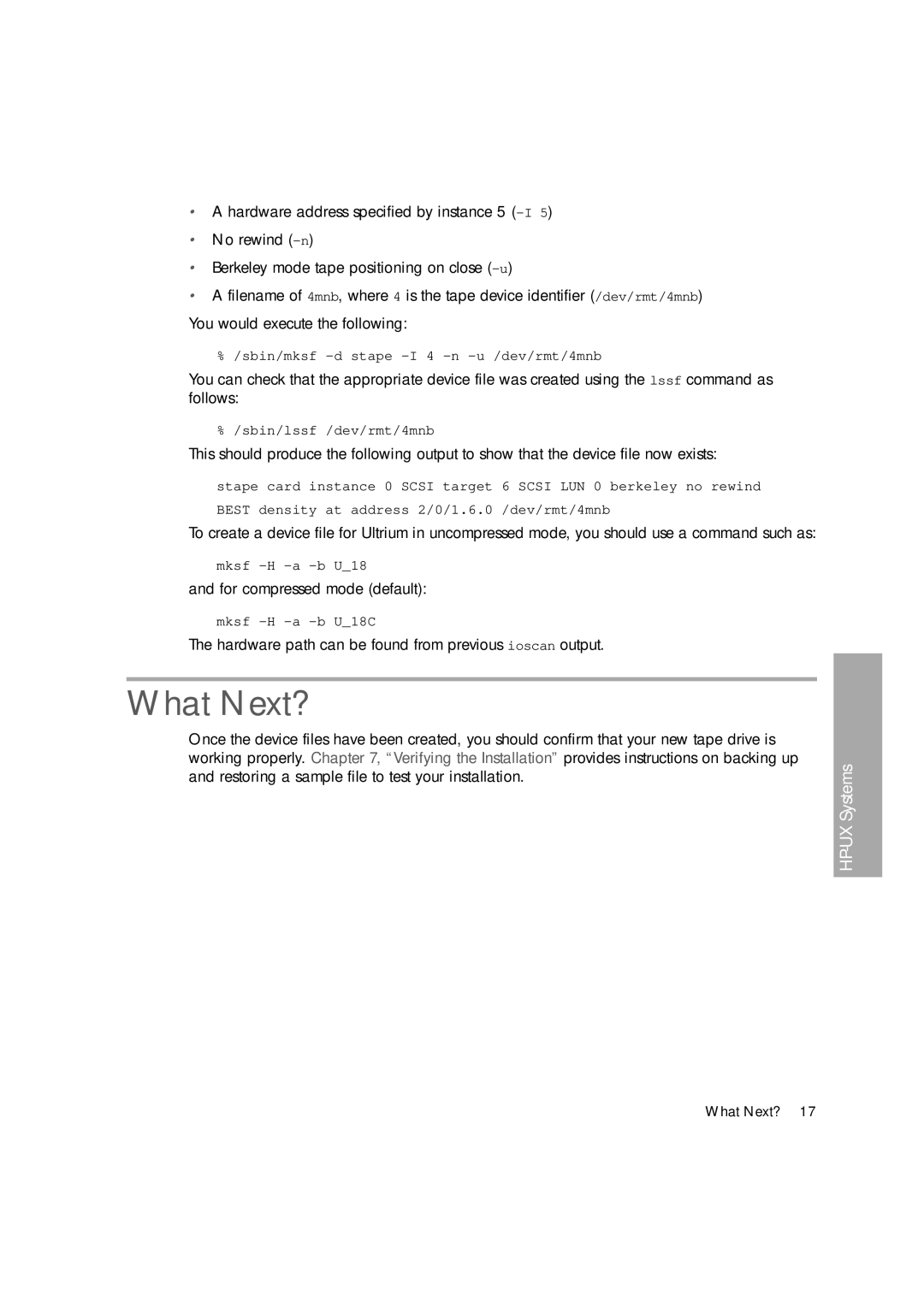
•A hardware address specified by instance 5
•No rewind
•Berkeley mode tape positioning on close
•A filename of 4mnb, where 4 is the tape device identifier (/dev/rmt/4mnb) You would execute the following:
% /sbin/mksf
You can check that the appropriate device file was created using the lssf command as follows:
% /sbin/lssf /dev/rmt/4mnb
This should produce the following output to show that the device file now exists:
stape card instance 0 SCSI target 6 SCSI LUN 0 berkeley no rewind
BEST density at address 2/0/1.6.0 /dev/rmt/4mnb
To create a device file for Ultrium in uncompressed mode, you should use a command such as:
mksf
and for compressed mode (default):
mksf
The hardware path can be found from previous ioscan output.
What Next?
Once the device files have been created, you should confirm that your new tape drive is working properly. Chapter 7, “Verifying the Installation” provides instructions on backing up
and restoring a sample file to test your installation.Systems
What Next? 17
